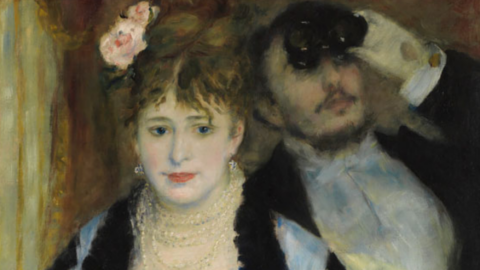Nearly 70% of fiction downloaded through the Amazon Kindle Store is in the romance genre.
The share in self-publishing is even higher, almost 80%. 9 bestseller su 10 in rankings of the Kindle Store are of the gender pink. The public loves to read love books. Of all this, what we like is "reading books", an activity that seems to be increasingly declining, crushed by media with more Pavlovian capacity than cerebral reading.
Our Liala made her read a lot, despite having attracted the irony and the screen of the literary elite who didn't miss her, not only her own disapproval, but also a good dose of insults. However, not everyone joined the chorus of "indignados". For example, a sensitive and shrewd sociologist of literature like Victor Spinazzola, whose works are being republished, has grasped the value of this literary production in the cultural history of our country. What's wrong with escapist reading? Nothing, as evidenced by the stratospheric success of romance among people who frequent cyberspace.
In the following pages Michele Giocondi tells us the story of this bestselling writer. 5 minutes to overcome a prejudice.
An "escape" writer
If there is a name that is synonymous with an escapist writer, suitable only for those who were once called seamstresses, or, in more recent times, manicurists, as Camilla Cederna did, enclosing in these terms the countless ladies and young ladies who they could not aspire to more demanding readings, this can only be Liala's. And next to her that of Carolina Invernizio, whom we have already met, or of some other author, both Italian and foreign, such as Delly, Barbara Cartland and a few others. Instead, let's skip the many anonymous “writers” of pink necklaces, such as Harmony, Blue moon and so on.
Liala: a term taken up more than half a century ago also by the members of group 63, to attribute it to writers, such as Bassani, Cassola and Pratolini, considered antiquated, incapable of renewing themselves, of little value, and therefore to be pointed out to the public pillory. The representatives of this elitist and haughty experimental avant-garde group in fact wanted to show with aristocratic detachment what level of baseness the homeland letters had reached, and branded their most popular interpreters as the "Liale" of Italy.
As we know, the mother of cretins is always pregnant, and to define that way, albeit with a deliberate and provocative polemical emphasis, the authors of the Garden of the Finzi-Continis or The girl from Bube, says a lot about who pronounced the sentence, even if there were various second thoughts afterwards.
Liala, a phenomenon of sociology of literature
This is to say how little that name coined by D'Annunzio was worth in literary terms, to whom a young Liana Negretti, married to Cambiasi, but on the way to separation, had turned, offering him her first novel to read.
In exchange, she received that name, in which the divine Gabriel wanted a wing to be present, given the content of the novel: a name that would have brought her luck. But probably the thing would have happened also with another name.
Liala! But was she really that low-ranking author, devoid of literary qualities and suitable for a mostly, but not exclusively, female audience of few pretensions? The answer is largely yes, as regards literary talents, even if there is no lack, especially in the later works, of more in-depth analyzes of female psychology, all in all by no means contemptible. However, the fact that she continues to be investigated, that she is the subject of studies and that conferences are still held today with top intellectuals about her work and the extraordinary impact it has had on an endless audience of female readers, goes to show that her was a significant presence in the literary landscape of the country. And which must also be taken into account, even if you are more interested in the sociology of literature than in literary criticism itself. And in any case, as we have already had the opportunity to state, if one wishes to pronounce an irrevocably negative judgment on her, one has the courage to extend it also to many serial authors, both Italian and foreign, who are so fashionable today and who have not literary gifts superior to his.
La life
Liala, pseudonym of Amalia Negretti, was born in Carate Lario in the province of Como in 1897. The father is a pharmacist and the family lives in comfortable conditions, but not particularly rich. The maternal grandmother belongs to the noble Odescalchi family, the one that in the second half of the 600s gave a pope to the Church, Innocent XI, who was proclaimed blessed by Pius XII in 1956. Therefore the grandmother's aristocratic surname is sometimes inserted next to that of the nephew, to sanction his noble roots.
The little girl lost her father when she was just two years old, and then she grew up under the guidance of her mother, and even more so of her grandmother, who was very strict in terms of education, rules to be respected and good manners, as befits a member of a prestigious family. She completes her studies regularly and after finishing high school she enrolls in the faculty of pharmacy, to follow in her father's footsteps, but she does not graduate, because she marries Marquis Pompeo Cambiasi, a lieutenant in the navy, who has almost twice the age of she.
In 1924 she had her first daughter, Primavera, but the relationship between the two spouses began to deteriorate, and shortly after Liala left her husband and began a relationship with another aristocrat, also an officer, but in the air force: Vittorio Centurione Scotto. It is the great love of her life, the one able to really give the existence of the future writer a boost. Their story, however, does not last very long, because in 1926 the companion crashes with his plane into Lake Varese during a flight exercise and loses his life.
Liala then, but this is not yet her name, gets closer to her husband and in 1929 she has her second daughter, Serenella. This rapprochement, however, does not last long: the two are not meant to understand each other, and in 1930 the definitive separation takes place. Liala then begins a new relationship with another officer, an aviation pilot, Pietro Sordi, with whom she will live together until 1949, when the two will leave. She also tries to obtain the annulment of the previous marriage from the Sacra Rota in order to get married, but the various attempts are in vain, and in 1932 Liala's partner is even forced to leave the air force to live together with a separated woman.
Start the activity di Writer
Meanwhile Liala starts writing. This happens almost by accident. She witnesses a train collision in Moneglia, near Genoa, where she lives with her husband, and she is asked, as a witness, to tell her episode for a newspaper. The piece is liked, and at the invitation of the editor of the newspaper, author of novels, she composes some stories. She later also wins a literary contest, but she still remains a perfect stranger.
In 1931, Mondadori decided to publish his first novel in which a love story was outlined with the subsequent tragic death of the protagonist: a story largely inspired by his brief relationship with the tragically deceased air force lieutenant. The book is called Yes sir, and derives from the answer that the protagonist of the novel, Furio, gives to his superior who has just ordered him to leave on a mission, immediately after the death of his partner.
Shortly before the release of the novel, while visiting D'Annunzio, the young writer strikes the senile imagination of the famous poet and writer, who has been permanently resident at the Vittoriale for about ten years. He likes the type of woman, the quick and sharp answers, the verve, the anything but indomitable character, the sure beauty, the blond hair with shades of Titian red, and to ensure that "there is always a wing in your name”, coined for her the pseudonym by which she is universally known: Liala.
Three weeks after the book's release, Arnoldo Mondadori sends her an enthusiastic telegram announcing that the first edition is already sold out. Reprints begin for a set of copies never officially known, but to date there is talk of a figure ranging from one million to three million copies: a very high figure both then and today, sufficient to place the novel at the top of the book market.
Arrives il success
The game seems done: Liala is now an established writer. Three years later, again for Mondadori, the sequel to Yes sir, Seven horns, then other novels, both with Mondadori and with Rizzoli, Del Duca, Cappelli, but above all with Sonzogno.
In all, there are over 80 of her novels, the result of a continuous and intense activity, which see our protagonist triumph both in bookshops and on newsstands. Yes, because seeing how much her work is attractive for readers, but above all for female readers, Rizzoli does not hesitate to offer her to write in her magazines as well, such as Annabella, and others. And she never backs down.
In 1946, just after the war, Mondadori even launched a magazine designed and cut especially for her: "Le confidenze di Liala", later transformed into "Confidenze", a magazine still alive today and with large circulations.
Un success universal in library e in newsstand
"Lalla who returns" is the novel where Liala brings back to life Lalla Acquaviva who had killed in a previous book. Such was the public reaction that the writer was forced to resurrect the protagonist. He is certainly not in little company: Agatha Christ herselfiand was driven to bring the obnoxious Hercule Poirot back to life after indignant protests from readers. Sometimes writers get caught up in their characters.
Liala becomes, between books and magazines, the most popular writer in the country. There are millions of her loyal readers of hers, for whom she publishes at least one book a year, sometimes many more. In 1944 there are even five. It is so followed that the indications and suggestions that leak from the novels and magazines become trendy, make fashion and not so much in the clothing sector, but in that of behavior, in the sentimental sphere, in the relationship with the opposite sex, in the details of social and emotional life. Her novels with colorful and captivating covers, under the title that heralds an exciting love story, are also on sale in the small stationery shops of the most remote villages. Some mothers baptize her daughter with her name, and when she finds out she sends the little girl a gold medal with the inscription: from Liala to Liala.
The luck of her characters is such that having made one of them die, Lalla, the readers flood her with letters and she finds a way to bring her back to life, not unlike what Collodi had done in the first draft of Pinocchio, and makes her the protagonist of his most famous trilogy, The Trilogy of Lalla Acquaviva. In the early eighties, the director Duccio Tessari brings this trilogy to the screen in the script Born of love.
Her stories make us dream, they allow the readers' imagination to live those dreams that in reality are denied to them. The protagonists, always belonging to the aristocratic or otherwise wealthy society, are elegant and charming, have uncommon names, but designed specifically to strike. Around them move characters of the beau monde endowed with undisputed charm, and give rise to romantic stories, to love affairs in which the characters most loved by readers always triumph in the end.
Le critical al his IT world; laid down by the season of the '68 in then
In the 68s, in which she regularly continued her activity, always followed by crowds of readers, criticism also began to pour in, especially after the upheavals of 'XNUMX. New ideals, new models of behavior emerge in society, diametrically opposed to those of which she was the darling. From the feminist front criticism rains against the type of woman who is too submissive and submissive to the man she embodies.
As we have seen, Cederna defines her as a "manicure writer", and the chorus becomes more and more numerous, without Liala getting too upset. Moreover, criticism of her also received from the opposite side, from the Church, for the casual and unbecoming attitudes of her heroines, not suitable for reading by young people. But she continued undaunted to write until the mid-eighties, when she was 88 years old. Her daughter assists and collaborates with her, to whom we also owe the completion of some of her works, carried out by other authors, but according to the intentions of the writer.
However, the favor of female readers continues to accompany her for a long time, then gradually decreases over time, until it almost disappears. But until recently it seems that all of her novels were still selling a million copies a year.
He died in Varese in 1995, at the beautiful age of 98.





